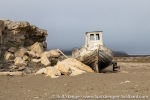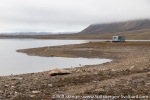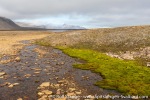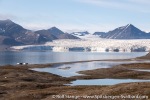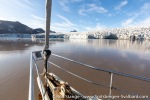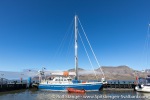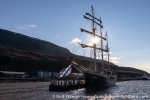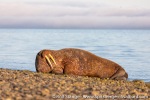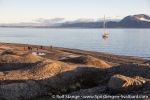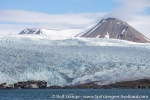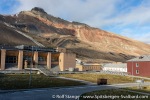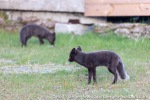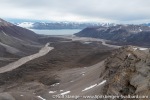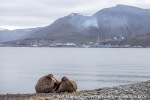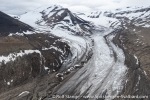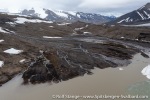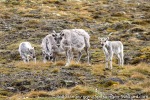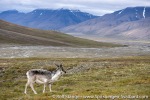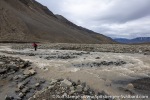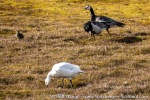-
current
recommendations- Liefdefjord
New page dedicated to one of Spitsbergen's most beautiful fjords. Background information and many photos.
- New Spitsbergen guidebook
The new edition of my Spitsbergen guidebook is out and available now!
- Liefdefjord
New page dedicated to one of Spitsbergen's most beautiful fjords. Background information and many photos.
Page Structure
-
Spitsbergen-News
- Select Month
- May 2025
- April 2025
- March 2025
- February 2025
- January 2025
- December 2024
- November 2024
- October 2024
- September 2024
- August 2024
- July 2024
- June 2024
- May 2024
- April 2024
- March 2024
- February 2024
- January 2024
- December 2023
- November 2023
- October 2023
- September 2023
- August 2023
- July 2023
- June 2023
- May 2023
- April 2023
- March 2023
- February 2023
- January 2023
- December 2022
- November 2022
- October 2022
- September 2022
- August 2022
- July 2022
- June 2022
- May 2022
- April 2022
- March 2022
- February 2022
- January 2022
- December 2021
- November 2021
- October 2021
- September 2021
- August 2021
- July 2021
- June 2021
- May 2021
- April 2021
- March 2021
- February 2021
- January 2021
- December 2020
- November 2020
- October 2020
- September 2020
- August 2020
- July 2020
- June 2020
- May 2020
- April 2020
- March 2020
- February 2020
- January 2020
- December 2019
- November 2019
- October 2019
- September 2019
- August 2019
- July 2019
- June 2019
- May 2019
- April 2019
- March 2019
- February 2019
- January 2019
- December 2018
- November 2018
- October 2018
- September 2018
- August 2018
- July 2018
- June 2018
- May 2018
- April 2018
- March 2018
- February 2018
- January 2018
- December 2017
- November 2017
- October 2017
- September 2017
- August 2017
- July 2017
- June 2017
- May 2017
- April 2017
- March 2017
- February 2017
- January 2017
- December 2016
- November 2016
- October 2016
- September 2016
- August 2016
- July 2016
- June 2016
- May 2016
- April 2016
- March 2016
- February 2016
- January 2016
- December 2015
- November 2015
- October 2015
- September 2015
- August 2015
- July 2015
- June 2015
- May 2015
- April 2015
- March 2015
- February 2015
- January 2015
- December 2014
- November 2014
- October 2014
- September 2014
- August 2014
- July 2014
- June 2014
- May 2014
- April 2014
- March 2014
- February 2014
- January 2014
- December 2013
- November 2013
- October 2013
- September 2013
- August 2013
- July 2013
- June 2013
- May 2013
- April 2013
- March 2013
- February 2013
- January 2013
- December 2012
- November 2012
- October 2012
- September 2012
- August 2012
- July 2012
- June 2012
- May 2012
- April 2012
- March 2012
- February 2012
- January 2012
- December 2011
- November 2011
- October 2011
- September 2011
- August 2011
- May 2011
- April 2011
- March 2011
- February 2011
- January 2011
- December 2010
- November 2010
- September 2010
- August 2010
- July 2010
- June 2010
- May 2010
- April 2010
- March 2010
- February 2010
- November 2009
- October 2009
- August 2009
- July 2009
- June 2009
- May 2009
- April 2009
- March 2009
- February 2009
- January 2009
- December 2008
- November 2008
- October 2008
- August 2008
- July 2008
- June 2008
- May 2008
- April 2008
- March 2008
- February 2008
- April 2000
- Select Month
-
weather information
-
Newsletter

| Guidebook: Spitsbergen-Svalbard |
Home →
Yearly Archives: 2021 − News & Stories
Erdmannflya, Ymerbukta – 09th August 2021
Mon
9 Aug
2021
The sun was hiding behind a low cloud layer, but calm weather and good visibility tempted us to hike across Erdmannflya, a wide tundra plain with many reindeer, various birds, lakes, wetlands and low rocky ridges with lovely views. The crossing took a large part of the day and was completed with close-up views of Esmarkbreen from the ship. Now everything around us has disappeared in the fog as we leave Isfjord. Soon we will turn northwards.
- gallery anchor link: #gallery_1985
Click on thumbnail to open an enlarged version of the specific photo.
Longyearbyen – 08th August 2021
Sun
8 Aug
2021
Finally, after almost 2 years, we can set sail again in Spitsbergen! We can hardly believe it, but we are moving, skipper Heinrich, my colleague Helga and nine who are keen to see a lot of Spitsbergen the upcoming 18 days.
The first evening brings a walk in Borebukta on the north side of Isfjord, a walrus and great views over wide tundra areas in the golden light of the midnight sun.
- gallery anchor link: #gallery_1982
Click on thumbnail to open an enlarged version of the specific photo.
Pyramiden and Dickson Land. And SV Antigua is back in Spitsbergen!
Thu
5 Aug
2021
As I mentioned recently – we spend a lot of time outside, and there is always something to do in Longyearbyen. So the laptop is closed most of the time, writing is not the main thing here and now. But the hiking boots are sometimes steaming, and at other times the outboard engine of our little Zodiac and at yet other times the camera. And that is how it should be.
SV Antigua finally back in Spitsbergen

Antigua in Ymerbukta.
We went out there for a lovely rendezvous.
Good old Antigua is back in Spitsbergen! Great! We went by Zodiac to Ymerbukta to meet the good ship and her crew there, where the ship was anchored for a rest after the crossing. It was good to see Captain Mario and the crew again! We took the opportunity together to take a detour into Colesbukta on the way to Longyearbyen, where the crew is now getting the ship ready for the first departure next week. I am looking forward to join them in late August. First, I’ll be out with SY Arctica II soon.

With Mario, Captain on SV Antigua, in Colesbukta, celebrating the occasion.
Pyramiden and Dickson Land
Now it has already been a while since we spent some days in and around Pyramiden in July. We went to look for – and found – a fossilised forest, which was covered with mud by a flood in a fluvial plain almost 400 million years ago. Most of the trees (sigillaria) just kept standing as they had been growing, and the still stand the day today. We had seen another part of this forest last year; fluvial erosion keeps bringing other parts to the light of day for a geological split-second, before they disappear and get lost forever. If you happen to be in the area during this geological moment, then you just have to take the opportunity.
And anyway, Dickson Land is just one of Spitsbergen’s most beautiful areas, if you ask me.
Gallery – In and around Pyramiden
- gallery anchor link: #gallery_1976
Click on thumbnail to open an enlarged version of the specific photo.
In Martin Conway’s footsteps in Bolterdalen
Wed
28 Jul
2021
The Arctic! Spitsbergen! Nature! Being out there! Fantastic …
That the summary 🙂 and that is what it is all about here these days, in and around Longyearbyen. I have spent already far too much time on the computer this year, that has to wait now. Otherwise I could already have written a lot here on my arctic travel blog.
But today is a day of rest, time to catch up a bit.
The presentation series “Arctic Wednesday” was a good opportunity to dig deeper in stories and subjects that are important to me, and the best thing is, of course, to do that in situ. Who remembers my presentation about Martin Conway’s first crossing of Spitsbergen in 1896? (That was online last April, in German).
Now we were following Conway’s footprints at least for a short bit of is path. Conway and his companion Garwood wanted to find a way from Adventdalen to Van Mijenfjord in the south. Due to a lack of geographic information (this lack of knowledge was their reason to get out in the first place, obviously), they started on a route that appears rather absurd today. The whole thing ended up as an impressive forced march until they had found what they were looking for and made it back to their camp in Adventdalen.

Conway and Garwood followed this valley in 1896 to the end, where we can see Reindalen. Hence, they had found a route from Adventdalen to Van Mijenfjord.
We didn’t do a forced march of 40 kilometres, but nevertheless, Bolterdalen has all the pleasures of arctic terrain that one needs for a day of fun: wet tundra for kilometres on end, river crossings and wide, rocky moraine landscape. That’s the Arctic!
The reward comes in shape of a lot of arctic nature, with a colourful flora, curious reindeer – many of them with calves – and petrified wood from the Tertiary.
After our hike, we got back into the car and drove back to Longyearbyen. Conway, in contrast, got back to his camp in pouring rain. One of his two ponies had run away from there and all the way back to Advent Point (today: Adventpynten, near the airport). The poor bear was already tired of the endless snow bogs. One of Conway’s men had to walk all the way back to get the poor animal. Since then, the valley has got its name: Bolter Valley, today Bolterdalen.
Gallery – Bolterdalen
Here a couple of impressions of our day in Bolterdalen, actually starting near Longyearbyen:
- gallery anchor link: #gallery_1973
Click on thumbnail to open an enlarged version of the specific photo.
Farewell to Mark Sabbatini
Most days have been a bit grey and windy recently, but full of joy and good experience outdoors, so time keeps flying. After a long period of abstinence, forced upon me by the pandemic, I enjoy being outside and that’s definitely the focus these days, rather than spending time on the computer. There would be more than enough to write about, stories and pictures from Spitsbergen’s stunning nature, so many beautiful impressions …
But that has to wait right now, we’ll get there later.
Things keep happening also up here in Spitsbergen, and it would be quite out of place to write about being in the outdoors, with stunning scenery, wildlife encounters and interesting “discoveries” of phenomena such as fossils and others, without having written about certain other events first.
Mark Sabbatini left Spitsbergen involuntarily
Especially when it is about someone who had to leave the island after more than 10 years (13, to be more precise). Someone who didn’t have plans to leave.
The power of the Sysselmester, the Norwegian government’s highest representative in Svalbard, includes to expel someone from the islands. This is something that happens rather rarely, for example in cases of persons repeteadly found to have used or even sold illegal drugs, something considered even more dangerous to a relatively young community in the far north, with several months of polar night, than elsewhere in the world.
Also tourists who arrived without any means to support their stay in Spitsbergen have already been sent back on the next flight. The authorities don’t want people to sleep in the streets or to camp wild in or near Longyearbyen, something that is a) forbidden and b) dangerous (polar bears).
So far, so understandable. But someone who has lived here fo 13 years?
Mark Sabbatini: 13 years of Spitsbergen, 13 years of “Icepeople”
The American Mark Sabbatini, per default a newspaper- and media person, had already spent considerable time in places including Antarctica when he came to Longyearbyen 13 years ago and started publishing his free, English newspaper and website “Icepeople”, an alternative media platform next to the local newspaper Svalbardposten and language-wise certainly more accessible to an international public. Since then, Mark has been part of Longyearbyen’s inventory, sitting at a table in a corner of Café Fruene and focussing on his computer while live is busy around him, keeping his newspaper and website updated.
But economically, “Icepeople” never became a source of wealth (something that its editor and author had never primarily intended): paper edition (the “fishwrapper”, as Mark himself calls it) and the website are fully accessible for free, and advertising has never brought much business. The hardest of several economical blows that Mark had to suffer, however, was the Gamle Sykehjem (“Old hospital”) story. This is a long story in itself (click here read more about it). In short words: Mark was one of several who bought a flat in this house which then showed structural damage due to melting permafrost, so it had to be evacuated on short notice and those who had bought a property there suffered more or less a full loss (some more than others, depending on circumstances). Other blows that Mark had to suffer affected his health, including falling and getting hurt badly in times of clear ice on the street in Longyearbyen. This all is well-known local gossip and Mark has never made a secret of it.
Economical and health-wise downhill development
Finally all reserves were used up, and Marks economical situation in the northernmost settlement (if we exclude Ny-Ålesund, which does not have a normal population) of the rich country Norway reached a point where he had increasing difficulties to fund his daily spendings. So it went on for a while. Many did this and that to help, and it went on, with better and more difficult times.
It is one of the consequences of the Spitsbergen Treaty that there is no network for social security beyond what is provided by everybody’s home countries. And as the Norwegian authorities do not accept people living in unsettled situation in Spitsbergen, they reserve the right to expel people from Svalbard who are not economically able to take care of themselves on a level accepted by the authorities.
New Sysselmester Lars Fause has a different viewpoint on this whole question than his precursor, and he decided to “take responsibility” as soon as he came into power recently.
Mark himself has told his view of this story in public a number of times, including Svalbardposten, his own website Icepeople and social media and in personal communication, also to this author. He emphasizes that he does not only understand and accept the Sysselmester’s decision, but he also considers it to be the right decision, in the light of the development in recent years.
Back to Alaska
Mark left Spitsbergen last Wednesday, headed for Juneau in Alaska, where he wants to recover health-wise and economically. Then, he wants to find himself a place in Alaska’s media landscape, preferably with a focus on remote communities.

Mark Sabbatini during his goodbye in Longyearbyen last Wednesday. Photo: Icepeople.
Mark wants to continue with Icepeople, so the page will be active and updated also in the future, supplying an international public with interest in local matters with all sorts of detailed information, presented in Mark’s own way, often with a touch of humour and written in a style that may occasionally be slightly challenging for non-native English speakers.
By the way, Mark has contributed with proofreading to a number of texts used in various publications, print and online, by this author, including shorter texts such as quite recently in Svalbardhytter or longer ones including updates of the English version of the guidebook Spitsbergen-Svalbard. According to Mark, he will be happy to make similar contributions also in the future, something I’ll be happy to make use of (as a paid service, as before)
If you want to read more about the circumstances of Mark’s departure, then you will find plenty of stuff on his own site, Icepeople.
So long for now, Mark! See you again!
Adventure Oslo airport. And: the answer
The Svalbardbutikken mystery
To start with, the answer to the question in the last blog. It was about this photo:

A corner in Svalbardbutikken, Longyearbyen’s refurbished supermarket.
$64-question for Spitsbergen-nerds: what’s wrong here? 🙂
So, what is wrong? Obviously, it wasn’t really obvious 🙂 the photo on the wall is mirror-inverted. They say they will get a corrected version at some stage.
Adventure Oslo airport
Spending a couple of hours in an airport is pretty much the most boring thing that I can think of. why write about it? Because it can go wrong if you expect it to work as normal.
Test or no test, that is the question
The question keeps coming up wether or not corona testing is required on a trip to Spitsbergen. The current situation is that immunised travellers (fully vaccinated or recently recovered, documented with an acknowledged document such as a digital European vaccination certificate) do not have to show a certificate for a negative test upon entering Norway or checking in on a flight to Spitsbergen. That may change at any time, as everything these days; authorities including the Sysselmester have already demanded to re-introduce the test obligation.
In my experience, it is an increasing risk that you can’t necessarily rely on governemt decisions especially when things are changing more or less every week. Then it’s whatever the airport official you are dealing with thinks. What use is in being right if you don’t get any further with is? An non-Corona-example: legally, as a EU citizen you don’t need a passport to travel from Norway to Spitsbergen, an ID card will do. But at the airport they demand a passport from non-Norwegians. Additionally, machines like automatic check-in machines or automated passport control machines can only read passports and not ID cards, so you are well advised to bring your passport anyway.

Digital EU-vaccination certificate: makes the process more efficient in Oslo Gardermoen.
But not necessarily efficient.
So, back to the initial question: currently, testing is not required under the above-mentioned conditions. But it may still be a good idea to have enought time to get one, just in case. There are testing facilities at Oslo Gardermoen airport, but you may need a couple of hours until you get the certificate, depending on traffic. And, according to Svalbardposten, the corona test station at Tromsø airport accepts only travellers coming in from international flights, but not outgoing ones destined for Svalbard. Those have to use equivalent services in Tromsø centre. Next to the extra time, expect costs of 1500 kroner (plus transportation) unless you are a registered resident in Spitsbergen, then it is free.
Adventure Oslo airport: travel information
The usual two hours from arrival at Oslo Gardermoen airport until departure may be enough when it’s early in the morning. Or maybe not. It is bizarre how rapidly the queues are getting longer and longer until they reach amazing dimensions. Last weekend, one could get the impression that they are discussing testing requirements in detail with every single passenger before you could continue to the actual check-in area. For us, with destination Longyearbyen and fully vaccinated, it was a very short conversation – “have a good trip” was the only comment as soon as we had provided our information. But getting that far is the point, and it takes much, much longer for many other flight passengers, and you may have hundreds in the queue ahead of you. From then on, the process was actually reasonably efficient (security check, passport control). Luckily.

An empty airport Oslo Gardermoen: that’s history!
According to Norwegian media, travellers have recently spent up to 8 hours queuing up in the airport of Oslo Gardermoen, missing their flights and everything that comes with that (forget about social distancing!). In the interest of all travellers, we can only hope that they improve the logistics significantly soonest. Anyway, if you plan to travel through Oslo at any time soon, make sure to have extra time.
And make sure to have even more time if you are not fully vaccinated or don’t have an accepted document for this.
Finally … Spitsbergen!
Mon
12 Jul
2021
Finally – Spitsbergen! That has been a long, long dry spell … but now we are back in Longyearbyen, keen and full of ideas and plans. Let’s see what the next weeks and months will bring.
If you want to fly anywhere from Oslo, make sure you have got enought time in Oslo Gardermoen. The queues can really be very long, and it is not a very efficient process.
And you should also plan some extra time when you go into Svalbardbutikken, Longyearbyen’s supermarket. It is kind of twice the size it used to be. But not everything is perfect (yet) …

A corner in Svalbardbutikken, Longyearbyen’s refurbished supermarket.
$64-question for Spitsbergen-nerds: what’s wrong here? 🙂
Some first little impressions from Oslo and Longyearbyen:
Finally – Spitsbergen! Ein paar erste, kleine Eindrücke, Longyearbyen und nähere Umgebung
- gallery anchor link: #gallery_1970
Click on thumbnail to open an enlarged version of the specific photo.
Van Mijenfjord: new national park
It has been a long process, hence it did not come as a surprise when the new Van Mijenfjord national park was established by law on 18 June. The new national park includes the northern part of Van Keulenfjord and adjoins the South Spitsbergen Nationalpark. As a result, the whole southern part of the main island of Spitsbergen from southern Nordenskiöld Land (the land area between Isfjord and Van Mijenfjord) is now protected on national park level.

Inner Van Mijenfjord in late May: now a national park.
Successor of the Nordenskiöld Land national park
The Van Mijenfjord national park is the amplified successor of Nordenskiöld Land national park which was established in 2003, but restricted to a land area on the north side of Van Mijenfjord. There have been changes since 2003 that have made the adjustment necessary, including the large clean-up of the former mining settlement of Sveagruva. Another aspect that needed proper regulation were the regular requests by the Sysselmannen (now Sysselmester) who asked the public to stay clear of certain sensitive areas during the late spring and eary summer, but without a precise definition of the area and time interval in question and the legal bindingness, leaving room for doubt for those who were operating in the area. This is now regulated beyond any grey zone potential. Yet another aspect is motorised traffic (snow mobiles) on fjord ice. Also here, the Sysselmannen has spoken out bans on such traffic on a regular basis. Including these bans which were spoken out on an annual basis in a permanent law makes it easier to know what one has to deal with. The details of some of these regulations are of course at least in part controversial; the government has chosen a very extensive and strict approach to the ban on motorised traffic, something that not all local tour enthusiasts in Longyearbyen are happy with as the opportunities to visit the south part of the main island are now strongly restricted. It is definitely important to some people, but their number is actually limited as even in Longyearbyen there are not too many people adventurous (and interested) enough to venture on long trips into these areas, far from the common routes. There were no snow mobile routes of relevance for tourists in the area in question.
Three new bird sanctuaries, snow mobile traffic strongly restricted

The new Van Mijenfjord national park (green boundary). Yellow dots: new bird sanctuaries. Red area: motorised traffic on fjord ice restricted (see text). Shaded area: total ban on motorised traffic on fjord ice.
Map © Norwegian Polar Institute / Sysselmester på Svalbard, modified.
Generally, the new Van Mijenfjord national park law includes the same regulations that apply to all national parks. Beyond these, following rules of practical importance for locals and tourists include the following:
- Midterhuken, Eholmen and Mariaholmen are now bird sanctuaries and it is forbidden to approach these areas or to move within them from 15 May to 15 August. Click here to access a map that shows the exact locations of these new bird sanctuaries.
- Snow mobiles and other motorised traffic on the fjord ice of Van Mijenfjord and Van Keulenfjord are now largely restricted every season from 01 March. Only registered locals are allowed to cross the fjord ice of parts of Van Mijenfjord on the shortest safe route, while other areas are now completely off limits for this kind of traffic from 01 March. Click here to access a map that shows the areas in detail. Non-motorised traffic (ski, dog sledge) remains legally possible within the usual legal framework.
- The core area o the former mining settlement of Sveagruva is excluded from the national park. Here, extensive clean-up works will continue for another while until most of the settlement is removed.
Norwegian government plans to denude non-Norwegian inhabitants of Longyearbyen of their right to vote
This is a remarkable procedure within a frame of politics that may on occasions well be described as nationalistic: The Norwegian ministry of justice has proposed to remove the right to vote or to be elected from non-Norwegian citizens in Longyearbyen unless they have lived at least three years in mainland Norway.
The background: Local democracy in Longyearbyen
A few words about the background: Spitsbergen is, in accordance with the Spitsbergen Treaty, not organised in a democratic way. The Sysselmannen is not elected but appointed by the government. On a community level, all of Spitsbergen’s settlements were founded by mining companies and run by these companies as company towns for most or all of their history. The introduction of democratic elements has been discussed on a number of occasions in the 20th century, but took shape not before the 1990s and a town council (Longyearbyen Lokalstyre, LL) was established in 2002. Only Longyearbyen has a council, the other settlements in Spitsbergen are still organised as company towns without a democratic structure.
Longyearbyen Lokalystre, led by a mayor (here: lokalstyreleder), is so far elected locally by all inhabitants who have been registered for a certain minimum period regardless of their nationality. This is what the government in Oslo wants to change.
Near 3000 people are registered inhabitants of Spitsbergen’s settlements, with a majority near 2500 in Longyearbyen. Of the total number, more than 900 have a nationality other than Norwegian. A large proportion of Longyearbyen’s population is thus of other than Norwegian nationality. Nationalities in Longyearbyen include Thai people, Swedes and Danes, Russian, Germans, UK and US citizens and many others.
Right to vote and to be elected to be removed from non-Norwegians
A recent proposal from the Norwegian ministry of justice suggests to remove the right to vote and to be elected to be removed from non-Norwegians unless they have been registered in a Norwegian mainland community for at least three years, a condition met by very few of the many hundred “foreigners” living in Longyearbyen.

Longyearbyen is a community with a very international population, but soon possibly with a much reduced level of democracy.
The background lies within general Norwegian Svalbard politics, which aim at developing Longyearbyen as a Norwegian community. This does not necessarily mean an entirely Norwegian population, as is also highlighted by undersecretary of state Lars Jacob Hiim of the ministry of justice in this context. According to Hiim, the proposal in question does not aim at changing Longyearbyen’s population structure, but is to ensure amongst others that voters and their elected representatives have knowledge about “aims and frame conditions of (Norwegian) Svalbard politics”.
Local rejection
Mayor Arild Olsen declared himself fully taken by surprise by this proposal, as Olsen told Svalbardposten. Neither he nor the local council had been involved or informed before the recent publication of the proposal, which Olsen strongly rejects.
Comment
Locally, the proposal is recected not only by Olsen, but also by many others. Some of those who are concerned are appalled: denuding people who have lived in their community for years, sometimes for many years, of the right to vote or to be elected feels completely out of place and politically-democratically rather unappetising especially in the context of a democratic country in the 21st century, let alone in a country like Norway which is usually considered to be a very modern and open society, often leading the democratic path for many other countries in the world. The current proposal has a very nationalistic flavour and is something one would rather expect, for example, from certain east European countries who have chosen a rather downward-leading path in their democratic development.
New weapon regulations
Whereas most people in more central parts of Europe hardly have anything to do with firearms in their daily life, things are different in polar bear country and with 5000 arms for near 2500 people, Longyearbyen has a weapon density that is probably not far away from Texan standards. It is actually not directly required by law to carry a rifle when leaving the settlements as it is often ventilated by poorly informed media (or guides, unfortunately – click here for more about some commonly told arctic bullshit stories), but it is common practice and it is generally strongly advised to be properly equipped when venturing out into polar bear country.
Commercial weapon rental in Longyearbyen
Scientists, individual tourists and others who need, can rent weapons in Longyearbyen from authorised weapon dealers, of which there are two. There was the time when some kind of ID was enough to get a heavy-calibre firearm; but this has been history for years now: to rent a weapon from a commercial supplier, you need to have papers that you are legally entitled to have a weapon of the relevant kind or of a higher class, for example a European firearms pass or a hunting license. If you do not have any of these or equivalent, you can apply for permission from the Sysselmannen.
Borrowing weapons from persons or companies
Until recently it was, however, easy to borrow a weapon from a private person or, as an employee, from a company. The owner of the weapon “just” had to make sure that the borrower had the proper skills and knowledge and was character-wise able to have control over such a potentially lethal weapon. A simple form had to completed by the owner to provide evidence for legal borrowing for up to 4 weeks. But this is now history.
New Norwegian weapon law from 01 June
A new weapon law came into force in Norway including Spitsbergen on 01 June, replacing the previous one which was from 1961. One key change is this: The responsibility to check the borrower’s appropriateness to be given a weapon is not the owner’s anymore but now lies with appropriate authorities. That is the police in mainland Norway and the Sysselmannen (new designation from July: Sysselmester) in Spitsbergen (Svalbard), who provides further information on their official website.
This condition is considered met when the borrower can provide papers that entitle him or her to own a weapon of the kind in question or a higher-classed one (yes, there was a similar sentence higher up on this page already). This can, for example, be a Norwegian weapon card or a European firearm pass. The owner is obligated to check this before handing a weapon to the borrower. This is valid both for borrowing weapons between private persons, for example between members of one family – a common practice in Longyearbyen – and within companies, for example tour operators who supply their guides with rifles, also a very common practice in Spitsbergen.

Out and on tour in Spitsbergen: a rifle is usually not far away.
Applying for borrowing a weapon
If the borrower does not have proper certification, then the only way to legally borrow a weapon is applying for permission from the Sysselmannen, who will check the applicant’s general appropriateness (certificate of good conduct) and the relevant skills and knowledge (“tilstrekkelig våpendugleik”) to handle a weapon. According to the Sysselmannen, this can be done by providing evidence for having done military service, active membership in a shooting club or a safety course that includes weapon handling such as, for example, the courses usually provided by UNIS in Longyearbyen to their students and employees. The application costs 248 kroner (near 25 Euro). Click here to access an application form, applications by email are not accepted.
That’s the theory. In practice, questions remain open: do official documents such as a certificate of good conduct need (approved) translation and which documents exactly are accepted or not. I have sent a question catalogue to the Sysselmannen and provide updates here as more information becomes available.
Borrowing versus renting
Commercial weapon rental (Norwegian: utleie) is forbidden for private persons and most companies. Only authorised weapon dealers may offer weapons for rental on a commercial basis.
Deterrents remain compulsory
All this does not touch the legal requirement to carry an appropriate deterrent such as a signal pistol because polar bears are strictly protected and may not just be shot. Everything must be done to avoid dangerous encounters or, if it happens anyway, to avoid shooting a polar bear as long as human life is safe. Pepper spray is, however, not legally available in Norway including Spitsbergen. In certain situations, for example from the relative safety of a hut or even a tent, pepper spray could be helpful to scare a polar bear away efficiently and for good, thus potentially avoiding a situation where a bear might be shot.
Norwegian regulations for international travelling to change soon
A couple of interesting press releases saw the light of day in Oslo last Friday (18 June), including information about tourism and ship-based tourism (cruises and coastal cruises) in Norway including Spitsbergen.
News from Norway about international travelling
There is another press release concerning international travelling. Non-Norwegians may initially get the impression that the release is not too exciting, but there is some good stuff hidden in the beaurocratic wording of the release, especially near the end. It starts on a lower level of excitement: the colours of the FHI chart, which is important information for European travellers, are now matching European colours again. Which is nice for everybody who prefers green above yellow, but it doesn’t change much. The latest FHI map, updated today (21 June), shows only two European countries outside Scandinavia in green, namely Poland and Romania.
Norway will lift travel warnings for Europe (Schengen treaty countries), the UK and and a range of other countries from 05 July, subject to future warnings that may be issued at any time as needed. But this is relevant for Norwgians who want to travel abroad rather than non-Norwegians who want to travel to Norway. Also family visits will be easier: so far limited to first-grade relatives, the list of persons who may visit family in Norway is now getting longer, including for example grandparents. That is great for everybody concerned, but not a game changer for people wishing to travel to Norway in general.

Norway joins the European vaccination certificate system, which may make it significantly easier to get some fresh arctic wind around the nose this summer for those who have plans.
Corona infection values will be “harmonised with Europe”
Further down in the press release in question, a harmonisation of infection thresholds that countries need to stay under in order to travel to Norway without quarantine is mentioned. This may initially not sound too exciting, but it means that the threshold will be lifted from 25 infections per 100,000 people within 14 days to 50, something that may be an important change, as the old threshold of 25 is easy to miss even for countries with a good development, while 50 gives some more room for smaller outbreaks to not ruin everyodies travel plans. This change will enter force on 05 July.
Norway joins European vaccination certificate system
And there is yet another important update: from 24 June, European travellers can use the European digital vaccination certificate to document their vaccinations or previous infections, and fully immunised travellers will be able to enter Norway regardless of the status of the country where they have stayed before entering Norway. This may indeed change things for many people.
Stage 3 of Norwegian opening plan comes on Sunday, including relevant updates for Spitsbergen tourism
Stage 3 of the Norwegian plan to lead the country back to normal life will come on Sunday, as the Norwegian government has announced in a press release. This first press release includes steps for the country back towards normal life and economy.
Two Oslo press releases
There is a second official press release, which is important for Spitsbergen tourism, including ship-based travelling. So far, a ban is in force that makes cruising over several days largely impossible. This will change on Sunday (20 June), but this comes with quite a bit of small print and the general development of the corona pandemic will continue to govern life in general and tourism in particular. This leaves a number of questionmarks, but the possibility of some Spitsbergen trips later this season is, at least, not completely unrealistic.

Norway makes steps to normal life and re-opens the possibility for cruises. It remains to be seen if “Spitsbergen under sail” will be possible in 2021.
General restrictions on international travelling remain in force
For international tourists, it is important to notice that the strict entry restrictions remain in force until further notice. Non-Norwegian tourists may enter the country only if they come from “yellow countries” on the FHI-map. Currently, most of Europe is red, and who can tell what the summer will bring considering the delta mutant of the corona virus that is connected to increasing infection figures in the UK? It is uncertain when Norway will permit at least fully vaccinated tourists from “red countries” to enter Norway again.
Currently, Norway only accepts vaccinations registered in Norway. This includes obviously vaccinations given in Norway; vaccinations given in other countries can, as of now, only be registered in Norway by persons who are registered in the country with a personal number (“fødselsnummer” or “D-nummer”). The digital European vaccination certificate may (or may not) facilitate this also for others, but that remains to be seen – as so much these days.
It is, however, clear that Norway will only accept vaccinations that are licensed by EMA (European Medicines Agency) for use in Europe. Other vaccinations such as Sputnik-V or Sinovac will currently not give travellers any advantages (other than the actual protection against infection and disease, of course!).
No testing requirement before flight to Longyearbyen for vaccinated travellers
Fully vaccinated / recovered travellers (“fully protected”) travellers do not need to test anymore before flying from mainland Norway to Longyearbyen. That is good news for the local tourism industry, where many hope that Norwegians will spend their summer holidays in Spitsbergen, where 83,5 % of the adult population (18 and older) are now vaccinated. But testing requirements for international travellers upon entering the country is another thing.
New rules for Spitsbergen-tourism
The following rules will apply from Sunday for tourism and cruising in Spitsbergen:
- Tour operators will need to operate according to safe hygiene standards according to the same rules as on the mainland (no special rules anymore).
- Hotels may use up to 90 % of their capacity and keep the remaining 10 % to accommodate travellers who need to quarantine.
- Charter flights from Norway to Longyearbyen are allowed again, but not from other countries.
- Ships that operate in Spitsbergen need to provide a disease protection plan that is accepted by the Sysselmann. Ships will not be able to use their full capacity, but 90 % or less depending on the protection status of all people on board.
- If there are people on board who are not fully immunised, then the number of people on board is limited to 200 and there is a requirement to do tests before departure. This is valid for Norway and for Spitsbergen.
- If everybody on board is fully immunised, then there may be up to 2000 people on board (yes, two thousand!). But in any case, only up to 90 % of the capacity may be used, or less, depending on the individual case.
- In case of a corona infection or a suspicion, ships need to return to the mainland or their home port, rather than to Longyearbyen where health service capacities are very limited.
- In case of a corona infection or a suspicion, everybody needs to stay on board until permission to leave the ship is given by relevant authorities.
- Cruise ships with an international itinerary need to comply to the requirements to quarantine according to the FHI-map as soon as there is anyone on board who needs to quarantine.
Comment
So there is now finally information for tourism and ship-based travelling in Spitsbergen, something we have been waiting for for quite a while now as the season would normally have started weeks ago already. Many ship owners and tour operators have cancelled their arctic summer season already a while ago. For those who still have trips in their schedules, it remains to be seen what will actually be possible.
A lot will obviously depend on the development of the pandemic. If you want to travel to Norway including Spitsbergen, then you’d better come from a “yellow” country and make sure it remains yellow until you have left.
Easing on entry to Norway and Spitsbergen for vaccinated people
Many tour operators have already cancelled their arctic summer season, but some still maintain some hope at least for the later part of the summer, and there are those who might consider private travelling to 78 degrees north or even a bit further.
If that will be possibe, what and how, remains to be seen. Corona is obviously the factor that is governing all travel-related activities now and for some time in the future, with all the well-known factors such as progress of vaccination programmes, new mutants of the virus, infection rates and so on.
The FHI-map: an important database
Given the current positive development lasts, Norway seems to be opening up stepwise. International tourists are essentially not allowed into the country as of now, with few exceptions depending on the country or region of origin, which is shown on this map of the Norwegian public health institute (FHI). “Yellow” makes travelling an option that can be considered also for tourists, but that applies currently only to parts of Finland as well as Iceland and Greenland.

Corona-map of the Norwegian public health institute (FHI). Latest version as of 04 June:
a lot of red.
Vaccinations make travelling easier, Spitsbergen is included
Nevertheless, there is a development that may give international travellers reason to hope:
- According to a governmental press release published on Wednesday, fully vaccinated or recovered people may enter Norway again without quarantine from today (Friday, 11 June). That is, however, only for persons who got their vaccinations in Norway or who have their infection with Covid-19 registered in Norway in the last 6 months, but chances are that this may chance when the European digital vaccination certificate system is in operation. Norway has announced to join this system, and we can be curious about Norwegian decisions coming then. Testing upon entering the country remains compulsory.
- Spitsbergen is now included in important steps of the easing: as Svalbardposten reports, vaccinated/recovered people who are not required to stay in quarantine (as above) may travel on the Longyearbyen. It was and is not possible to quarantine in Svalbard, so quarantine time has to be done on the mainland, a major obstacle for international travellers. A negative Corona test in Norway within 24 hours before departure to Longyearbyen remains compulsory.
The question of coastal cruises in Spitsbergen waters remains so far open. There is still hope that some cruises may be possible later in the season, possibly only for vaccinated/recovered people.
Corona, Norway, Barentsburg …
Corona, getting to Norway Longyearbyen vaccination and testing
One can follow the almost daily news and press releases on travel and quarantine regulations in Norway with some astonishment. The bottomline is currently that the Norwegian government opens for easier access to the country by easing on quarantine – but only for Norwegians. Exceptions from this simple rule are few at the time being. The policy is currently to enable Norwegian travellers to spend at least some of the quarantine time at a place of their own choice, rather than in a quarantine hotel. Corona vaccinations are currently only recognized if applied in Norway, this may change with the introduction of a digital European vaccination certificate.
Spitsbergen has a record-breaking vaccination rate of more than 80 % of the adult population. Nevertheless, frustration is growing in Longyearbyen about being kind of forgotten while the rest of the country is opening up. Despite of the high vaccination rate, Longyearbyen is Norway’s only town which requires testing before you can trave there. This is not a local decision, local authorities seem to be happy to get rid of this testing regime but it is a decision that needs to be taken in Oslo. The obligation to test before travelling to Longyearbyen also apply to immunised (vaccinated or previously infected) people. A rapid test is available at the airport of Oslo Gardermoen for 1195 kroner (near 120 Euro), while a PCR test with result in 1-5 hours comes for 2500 kroner (near 250 Euro) (prices from a supplier at Oslo Gardermoen). In addition comes the challenge of testing while travelling, which may easily add an extra hotel night to one’s schedule.
Something much better

Barentsburg and the view over Grønfjord. Drawn by Edda Maaß, who celebrated her 18th birthday recently, with kind permission. Congratulations!
But one can also just forget all this misery at least for a short while and enjoy something beautiful, such as this drawing made by Edda Maaß who recently filled 18 years. Many readers will know the place 🙂
Norway untightens entry requirements – for Norwegians
The Norwegian government has announced to untighten entry restrictions in a press release on 21 May..
On the day the new regulations entered force, on 27 May, the government released another note with additional information, including an entry ban for tourists as one key point. One might get the impression that the Norwegian government took this as an implicitness that did not require explicite mentioning beyond insinuation in the said release.
Non-norwegian tourists are NOT allowed to enter Norway
The above-mentioned release from 27 May says amongst others:
“These (add: persons) can not enter Norway (applies to citizens of all countries, including citizens from EU/European economic zone and scandinavian countries):
- Tourists
- …
Followed by a list of groups that are currently not allowed to enter Norway (unless an excemption applies to them on an individual case basis), including distant relatives (such as grandparents!), foreign students (including those from scandinavian countries), persons with residence or work permit but who do not already live in Norway, business-related travelers, owners of holiday houses etc. (not complete).
Mentioning tourists as the first group in this list, and with the single word “tourists” in contrast to all other groups, sends a clear message: tourists are currently not welcome in Norway.

Airport at Oslo Gardermoen: international tourist traffic is a one way road at the time being: Norwegians may visit other countries, but not the other way around.
There are excemptions for travelers who may enter Norway despite of the general entry ban. This includes, amongst others, non-Norwegians who live in Norway, people from regions or countries which sufficiently low incidence that the quarantine obligation does not apply, visitors to close relatives, people in certain professions (for example journalists, seafarers, medical personell from certain countries, …) and people who are registered residents in Spitsbergen.
It is the map of the FHI, the Norwegian national health authority, that will play an important role in this context for another while. Currently, almost all European countries are listed as “red”.
As you go into detail, the roles are complex, please check with the official websites of relevant Norwegian authorities for binding information. But in general, the message is pretty clear, see above.
News-Listing live generated at 2025/May/03 at 06:10:17 Uhr (GMT+1)
